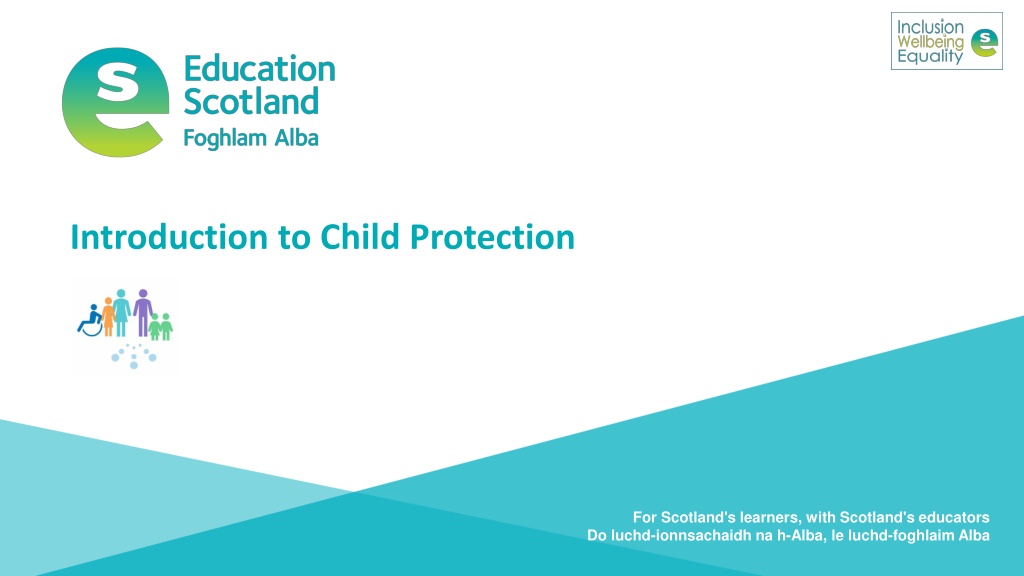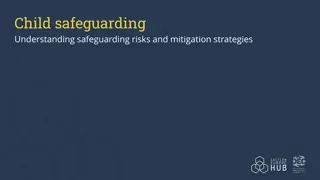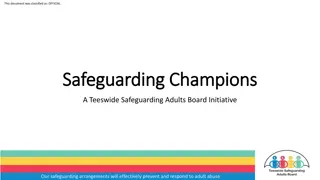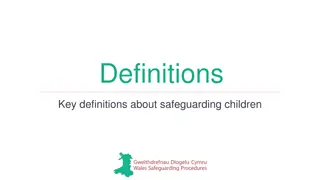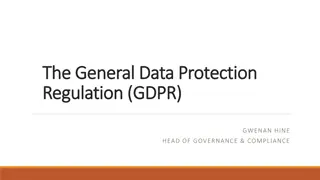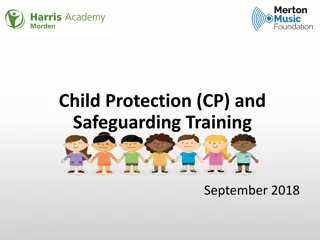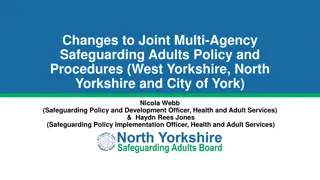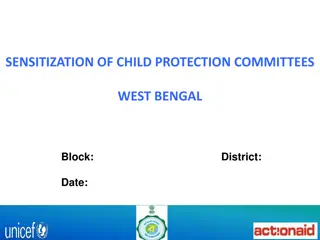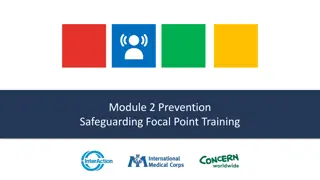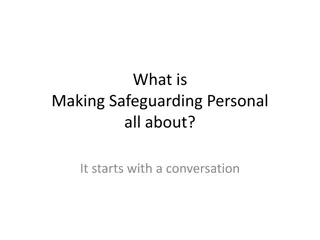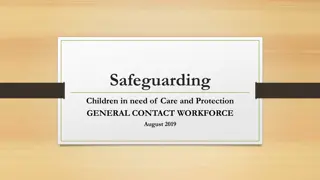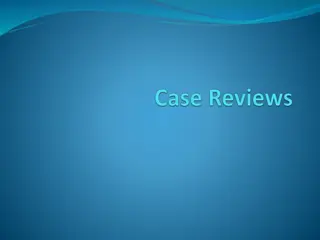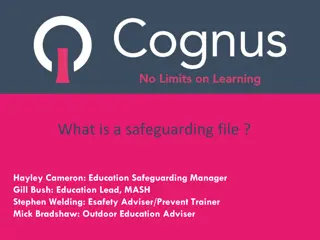Child Protection and Safeguarding in Scotland
Child protection and safeguarding in Scotland involve processes to assess and address potential harm to children. Safeguarding extends to ensuring overall welfare and promoting positive outcomes for children, young people, and protected adults. Legislation such as the Children (Scotland) Act 1995 and the Local Government in Scotland Act 2003 play key roles in local authority interventions. It is crucial to align child protection efforts with the Getting It Right for Every Child approach and Wellbeing Wheel indicators.
Download Presentation

Please find below an Image/Link to download the presentation.
The content on the website is provided AS IS for your information and personal use only. It may not be sold, licensed, or shared on other websites without obtaining consent from the author.If you encounter any issues during the download, it is possible that the publisher has removed the file from their server.
You are allowed to download the files provided on this website for personal or commercial use, subject to the condition that they are used lawfully. All files are the property of their respective owners.
The content on the website is provided AS IS for your information and personal use only. It may not be sold, licensed, or shared on other websites without obtaining consent from the author.
E N D
Presentation Transcript
Introduction to Child Protection For Scotland's learners, with Scotland's educators Do luchd-ionnsachaidh na h-Alba, le luchd-foghlaim Alba
What do we mean by Child Protection? Child protection refers to the processes involved in consideration, assessment and planning of required action, together with the actions themselves, where there are concerns that a child may be at risk of harm. Child protection guidance provides overall direction for agencies and professional disciplines where there are concerns that a child may be at risk of harm. Child protection procedures are initiated when police, social work or health professionals determine that a child may have been abused or may be at risk of significant harm. National Guidance for Child Protection in Scotland 2021 - gov.scot (www.gov.scot) For Scotland's learners, with Scotland's educators Do luchd-ionnsachaidh na h-Alba, le luchd-foghlaim Alba
What do we mean by Safeguarding This is a much wider concept than child protection and refers to promoting the welfare of children, young people and protected adults. It encompasses: Protecting from maltreatment Preventing impairment of their health or development Ensuring that they are growing up in circumstances consistent with the provision of safe and effective care Taking action to enable all children, young people and protected adults to have the best outcome It must be understood that everyone who works with children and young people has a responsibility to safeguard them and promote their welfare. For Scotland's learners, with Scotland's educators Do luchd-ionnsachaidh na h-Alba, le luchd-foghlaim Alba
How do you know if you are getting it right? In Scotland, child protection has to be seen in the context of the wider Getting It Right For Every Child (GIRFEC) approach, the Early Years Framework and the UN Convention on the Rights of the Child. GIRFEC promotes action to improve the wellbeing of all children and young people in eight areas. The primary indicator for child protection is to keep a child safe and, in so doing, attention is given to other areas of wellbeing as appropriate. The Wellbeing Wheel outlines the eight indicators of wellbeing that every adult should consider when observing or recording strengths and risks to a child s or young person s wellbeing. These observations should inform any assessment of a child s or young person s wellbeing, therefore it is essential that every adult is clear about what each these indicators mean. The GIRFEC National Practice Model presents a series of tools that are integral to promotion and assessment of wellbeing and is comprised of several elements: the Wellbeing Indicators; the My World Triangle; and the Resilience Matrix. For Scotland's learners, with Scotland's educators Do luchd-ionnsachaidh na h-Alba, le luchd-foghlaim Alba
Current Legislation Children (Scotland) Act 1995 This remains one of the primary pieces of legislation providing the range and scope of local authority intervention in the lives of children and their families. Local Government in Scotland Act 2003 Parts 2 and 3 of this legislation are concerned with scope and establishment of local Child Protection Committees. The Children and Young People (Scotland) Act 2014: places a duty on local authorities and schools to ensure the wellbeing of children and young people is safeguarded, supported and promoted. The voice of the child or young person is essential in understanding their needs and ensuring their wellbeing is safeguarded, supported and promoted. Fostering strong relationships between staff and children and young people is essential to this practice. Prevent, Section 26 of the Counter-Terrorism and Security Act, 2015 This legislation places a duty on central bodies to have due regard to the need to prevent people being drawn into terrorism. Overarching legislation: Human Rights Act 1998. United Nations Convention on the Rights of the Child (UNCRC). United Nations Convention on the Rights of Persons with Disabilities (UNCRPD). Data Protection Act. The Equality Act 2010. For Scotland's learners, with Scotland's educators Do luchd-ionnsachaidh na h-Alba, le luchd-foghlaim Alba
What does this mean for you? Receive / listen Listen carefully Take all concerns seriously and act promptly Inform that this information will be passed onto the relevant people Capture details of the concern Record information in writing as soon as possible Refer DO NOT investigate It is not your job to decide if a child has been abused but it is our responsibility to report our concerns Record Follow local authority Child protection / safeguarding procedures Always seek advice if you are unsure and always follow up to see what action has been taken Do NOT delay! For Scotland's learners, with Scotland's educators Do luchd-ionnsachaidh na h-Alba, le luchd-foghlaim Alba
